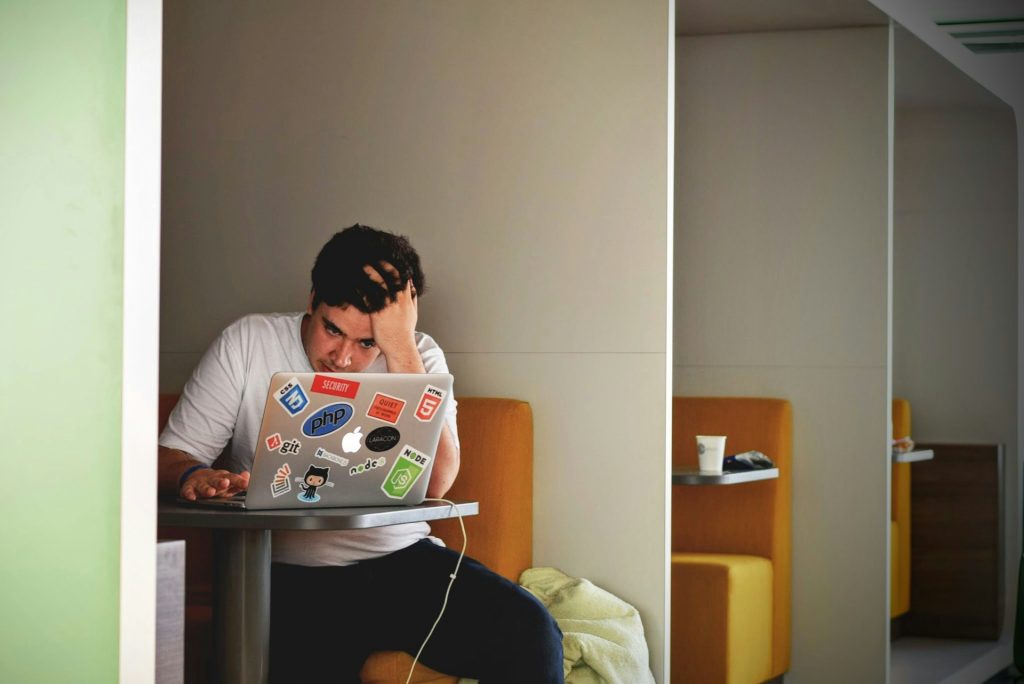Many college students step onto campus at the start of each term bearing clear ambitions and fresh enthusiasm. They picture strong grades, rewarding friendships, and a future filled with opportunity. Classroom discussions, late study sessions, club commitments, and part-time shifts soon place heavy strain on that hopeful picture. Within weeks, the constant pace can spark growing weariness that shadows lecture halls and library tables alike. Some learners meet exhaustion early, before the first quiz, while others fight fatigue after mid-semester papers flood planners. Expanding obligations push many to think, “Who can write my paper?” to get quick relief, yet offer shallow solutions. Across countless campuses, burnout appears more common than rare, shaping a hidden culture of quiet struggle. Understanding this widespread pattern requires careful study of day-to-day academic life and honest discussions about support.
Observers notice rising appointment numbers at counselling centres and longer waiting lists for therapy sessions. Faculty members report increases in late submissions and absence requests once pressure peaks near finals. Health surveys reveal escalating stress scores among undergraduates compared with reports from a decade earlier. Together, these trends paint a clear picture: sustained academic strain is reshaping student well-being across the nation.
The Roots of Student Stress
College offers growth, yet many elements combine to build relentless pressure. Dense timetables, complex readings, laboratory reports, and group presentations crowd calendars. Away from lectures, many learners support relatives or manage tight budgets that stretch every coin. Each sunrise brings fresh concerns, whether overdue statistics homework, roommate quarrels, or unpaid utility bills. Social media feeds blur with academic alerts, keeping the brain in a restless state long past nightfall. When exhaustion settles, passion for learning can fade quickly, leaving attendance records and group morale in decline. Stress rarely dissolves by itself and often intensifies when warning signs remain ignored.
First-year students, still adjusting to independent living, face special hurdles such as homesickness and untested study skills. International learners navigate culture shock, visa rules, and language barriers on top of standard coursework. Athletes juggle travel schedules that steal precious hours from labs and seminars. Understanding these varied roots helps administrators craft targeted programs that address specific pain points rather than offering one-size solutions.
Understanding Academic Burnout
Academic burnout arrives quietly, advancing like a slow tide toward dedicated learners who attempt to handle everything alone. Heavy credit loads pair with extended work shifts required to cover tuition, rent, and textbooks. Energy reserves drain gradually until once-enjoyed subjects feel tired. Motivation crumbles, assignment sheets gather dust, and lectures lose spark. This condition reaches beyond routine stress into ongoing fatigue resistant to ordinary breaks. Weekend travels home or holiday recesses bring momentary calm that vanishes upon return to campus routines. Without deliberate change, burnout burrows deeper, affecting mood, memory, and immune function.
Researchers link prolonged cortisol elevation with weakened concentration, explaining forgotten formulas during exams despite diligent revision. Extended exhaustion also correlates with increased anxiety and depressive episodes among young adults. These findings highlight the urgent need for early detection and sustained intervention within academic settings.
Institutions that run resilience workshops report improved retention rates and greater student satisfaction. Sessions teach practical skills like setting micro-goals, reframing negative thoughts, and seeking feedback rather than fearing critique. Graduates credit these programmes with helping them navigate workplace challenges after leaving campus. Documented success stories demonstrate that targeted wellness education yields measurable academic and personal gains.
Spotting Burnout in Students
Exhaustion presents different faces for each individual navigating crowded lecture halls. One student feels persistent lethargy every morning, while another flares with sudden anger during minor setbacks. Productivity drops; tasks once completed in minutes now stretch across hours. Focus drifts mid-paragraph, demanding repeated breaks just to maintain awareness. Physical signals include headache, upset stomach, and aching shoulders. Emotional hints can appear subtle, such as declining invitations, reduced club involvement, or indifference toward past hobbies.
Academic advisors report that early attendance slips often serve as the first visible clue of hidden distress. Friends may observe mood changes before instructors notice grade shifts, positioning peer networks as vital detection allies. Awareness campaigns that teach students to recognise these signs can prompt earlier help-seeking and better outcomes.
Examples of Stressful Situations for Students and How to Deal with Them
Daily campus life holds many pressure triggers. Major exams, group research reports, unpaid bills, and unpredictable work rosters all create friction. Confusing assignment guidelines or clashing deadlines often spark panic, especially when sleep is scarce. Poor nutrition intensifies frustration, shortening tempers and clouding judgment. Missing a pay shift can increase financial worry and distract attention from reading lists. Social gatherings sometimes overlap with critical revision periods, forcing difficult choices that may strain friendships.
Students can manage these moments by breaking large tasks into smaller steps, reducing feelings of helplessness. Using campus budgeting workshops helps control money stress, while writing centres clarify assignment requirements early. Short exercise sessions between lectures boost mood and cognitive function. Practising assertive communication allows learners to negotiate deadlines or shift hours without guilt, preserving both grades and income.
Laboratory majors often face evening practicals that overlap with dining hall hours, leading to skipped meals. Packing nutritious snacks in advance prevents low blood sugar which distracts attention during detailed experiments. Art students encounter studio critiques that feel personal; practising constructive feedback acceptance reduces defensive reactions. Role-playing exercises in orientation programmes can prepare learners for these high-emotion scenarios.
Coping Strategies for Academic Burnout
Recovery from burnout demands deliberate planning and consistent healthy routines. Designated breaks for walking, reading, or quiet reflection restore drained energy and sharpen focus. Establish clear boundaries separating study hours from leisure, then respect those limits by silencing notifications after chosen times. Explore campus resources: counselling centres, peer mentoring circles, and wellness workshops offer practical guidance grounded in experience. Regular exercise paired with balanced meals supports brain function and stabilises mood.
Mindfulness training, delivered through brief guided sessions, helps students remain present during challenging coursework. Time-management apps allow real-time tracking of tasks, lowering the impulse to procrastinate. Celebrating small milestones, such as completing a reading list, reinforces progress and rebuilds confidence.
Language matters when addressing burnout; replacing defeatist statements with realistic affirmations strengthens resolve. Writing an encouraging note on a planner or dorm mirror can boost morale during high-pressure weeks. Group fitness classes add social accountability, making regular movement easier to maintain over long semesters. Institutions offering subsidised gym memberships remove financial barriers and promote inclusive wellness cultures.
Support Systems that Ease Student Stress
Supportive relationships lighten heavy academic loads. Friends supply laughter, validation, and the chance to share struggles without judgment. Family members bring perspective formed through past challenges and remind students that disappointment can be temporary. Mentors such as faculty advisers or graduate assistants guide learners through complex projects and outline effective study techniques. Regular coffee meet-ups, shared note collections, and group rehearsals foster connection and accountability among peers.
Residence hall programmes that pair newcomers with experienced student leaders encourage early community building. Online discussion boards extend help beyond business hours, ensuring advice remains available during late study periods. When supportive networks function well, individuals feel empowered to seek help before problems escalate.
Self-Care as a Remedy for Ongoing Stress
Constant movement from lecture to lab can drain spirit and weaken health. Intentional pauses for controlled breathing or gentle stretches slow the heart rate and refresh concentration. Setting sensible limits on obligations protects mental resources needed for quality work. Declining extra shifts or additional committee roles preserves time for sleep and recreation. Nutrient-rich meals containing grains, fruit, and vegetables maintain steady energy better than fried snacks. Consistent bedtime routines allow the body to repair tissue and consolidate memory.
Creative outlets such as painting, music, or journaling provide a healthy release for built-up tension. Nature walks offer free therapy, combining light exercise with fresh air and calming scenery. Regular self-evaluations encourage students to adjust schedules before small stresses accumulate.
Long-Term Effects of Ignoring Burnout
Neglected burnout rarely fades after graduation; instead, it shadows early careers with lingering fatigue. Continuous stress developed during college can translate into chronic sleep issues, digestive trouble, or persistent anxiety. Missed lessons and dropped courses may reduce job readiness and confidence during interviews. Employers seek staff who manage tasks without collapsing under strain. Relationships may fracture when one partner consistently lacks energy or interest. Ongoing exhaustion lowers self-belief, discouraging individuals from pursuing advancement or new hobbies.
Medical research links prolonged stress with compromised immune response, raising susceptibility to illness. Financial consequences can arise when healthcare costs increase due to unmanaged conditions. Addressing burnout early, therefore, protects both health and future economic stability.
Unchecked burnout may influence civic engagement as well, reducing volunteering rates and dampening community spirit. Fatigued individuals have less bandwidth for activism, mentoring, or voting, which can weaken social bonds. Society loses creative energy and innovation when young adults carry heavy emotional loads into adulthood. Preventing burnout is not only an individual concern but also a public health priority.
Finding Balance in College and Beyond
Campus life offers practical ground for building sound habits that counter pressure. Perfection remains unrealistic; instead, steady practice, self-awareness, and kindness toward oneself matter more. Students need not stay overwhelmed indefinitely. Advisers, wellness staff, and supportive peers await contact. Daily choices—limiting screen time, preparing wholesome meals, scheduling brief walks, pausing for reflection—add up. Each wise decision pries another link from burnout’s chain.
Looking forward, graduates who master coping skills carry those tools into workplaces, families, and communities. They model healthy boundaries for colleagues and younger siblings, multiplying positive impact. Although college spans a few short years, lessons learned influence decades of professional and personal growth.
Planning leisure activities in tangible calendars, rather than hoping for spare moments, safeguards pleasure time. Mini vacations, such as weekend hikes or museum visits, refresh perspective and remind students of life beyond grades. Regular gratitude journaling helps maintain focus on progress rather than unresolved tasks. By celebrating growth, learners reinforce motivation and sustain balanced approaches to ongoing challenges. Shared laughter during group recreation nurtures friendships that buffer stress during peak examination seasons.





















